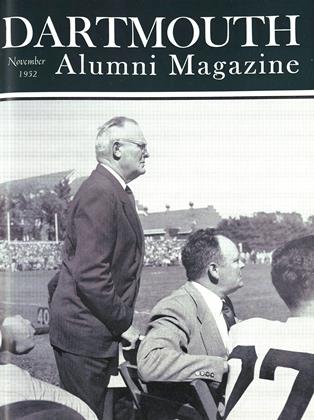By David J. Luck '34 and Hugh G. Wales. New York: Prentice-Hall, Inc. 532 pp. $5.75.
Marketing research has been increasingly used during the past 30 years as a tool in business-decision making. Its value is still far from being universally appreciated, however. Several recent books have helped to promote its acceptance by executives and to acquaint practitioners with the principal procedures and techniques in this field. Luck and Wales have made a useful contribution in these directions. Their book provides a comprehensive introduction to the subject both for business men, particularly manufacturers, and college students.
Marketing Research is divided into four parts. Part I, Getting Acquainted with Marketing Research, describes the role of this function in modern business, points out the types of problems which research helps to solve, tells how business is organized to perform the function, and sets forth what marketing research has to offer as a career. Part 11, Sources of Marketing Data, shows the differences between, the usefulness of, and the methods of gathering, primary and secondary data.
Part III, Techniques of Marketing Research, describes the steps in a complete marketing research program, from the definition of the problem to "putting the findings to work." Part IV, The Application of Marketing Research, shows the reader how research techniques and procedures are employed in the broad fields of product development, market-potential measurement, and the measurement of advertising's audience and effective ness.
As the authors themselves state, no attempt is made to go deeply into highly technical phases of the subject. An appended bibliography suggests sources of such information for readers who are interested. The style of writing is very readable. The text is supported by helpful diagrams, tables and pictures.
 View Full Issue
View Full Issue
More From This Issue
-
 Article
ArticleOn Educational Policy
November 1952 By PROF. ANTON A. RAVEN -
 Article
ArticleThe Business of Being a Gentleman
November 1952 -
 Class Notes
Class Notes1918
November 1952 By ERNEST H. EARLEY, DONALD L. BARR -
 Class Notes
Class Notes1929
November 1952 By F. WILLIAM ANDRES, EDWIN C. CHINLUND -
 Article
Article"The Greatest Sport"
November 1952 -
 Class Notes
Class Notes1921
November 1952 By REGINALD B. MINER, ROBERT M. MACDONALD
Albert W. Frey '20
Books
-
 Books
BooksFACULTY PUBLICATIONS
April 1917 -
 Books
BooksMovable Bridges: vol 1 Superstructure
August, 1926 -
 Books
BooksShelflife
Sept/Oct 2007 -
 Books
BooksFRANCE 1940-1942, A COLLECTION OF DOCUMENTS AND BIBLIOGRAPHY.
November 1942 By Frank Maloy Anderson -
 Books
BooksAMAZING BUT TRUE: STORIES ABOUT PEOPLE, PLACES, AND THINGS.
MAY 1973 By JOHN HURD '21 -
 Books
BooksLAWYERS AND THE CONSTITUTION: HOW LAISSEZ FAIRE CAME TO THE SUPREME COURT
October 1942 By Robert K. Carr '29


